London is an ultra-modern city with a rich and long history, and it manages to combine this striking ambivalence perfectly in its art and culture offerings through a range of museums, galleries, and events to satisfy just about every taste. In trendy neighborhoods like Brixton and Shoreditch, visitors will find wonderful street art scenes while those more inclined to learn about the history of the United Kingdom can fill entire days at museums, portrait galleries, and royal residences. In addition to London’s world-famous West End musicals is a whole host of captivating theater and performance art by innovative and daring creators, so you can expand your horizons beyond The Lion King. Experience London’s rich culture according to your taste, budget, and schedule by taking cues from this guide to the city’s unique artistic and cultural flair.
Museums

Photo: Richie Chan/Shutterstock
Tate Modern — It may have only been open for 19 years, but the Tate Modern is one of London’s most famous cultural landmarks. Positioned along the South Bank in a former power station, the Tate Modern has a permanent collection of modern and contemporary art, including pieces by Pablo Picasso and Andy Warhol, that is free to access. There are also a whole host of national and international exhibitions held throughout the year that can be visited for an additional fee. The bookstore in this huge and unusual building is also fun to browse through.

Photo: Alex Segre/Shutterstock
The British Museum — As there are over 80,000 artifacts displayed, you could easily spend several weeks in the British Museum and not have covered it all. Located in the elegant Bloomsbury district, close to Tottenham Court Road and Holborn station, this free museum houses the world’s largest display of ancient Egyptian objects outside of Egypt itself, as well as such treasures as the Rosetta Stone. The building underwent a transformation in 2000 with the addition of a beautiful indoor courtyard that easily connects visitors to every gallery. If you only have limited time at the museum, check out our guide on how to crush the British Museum in one day.
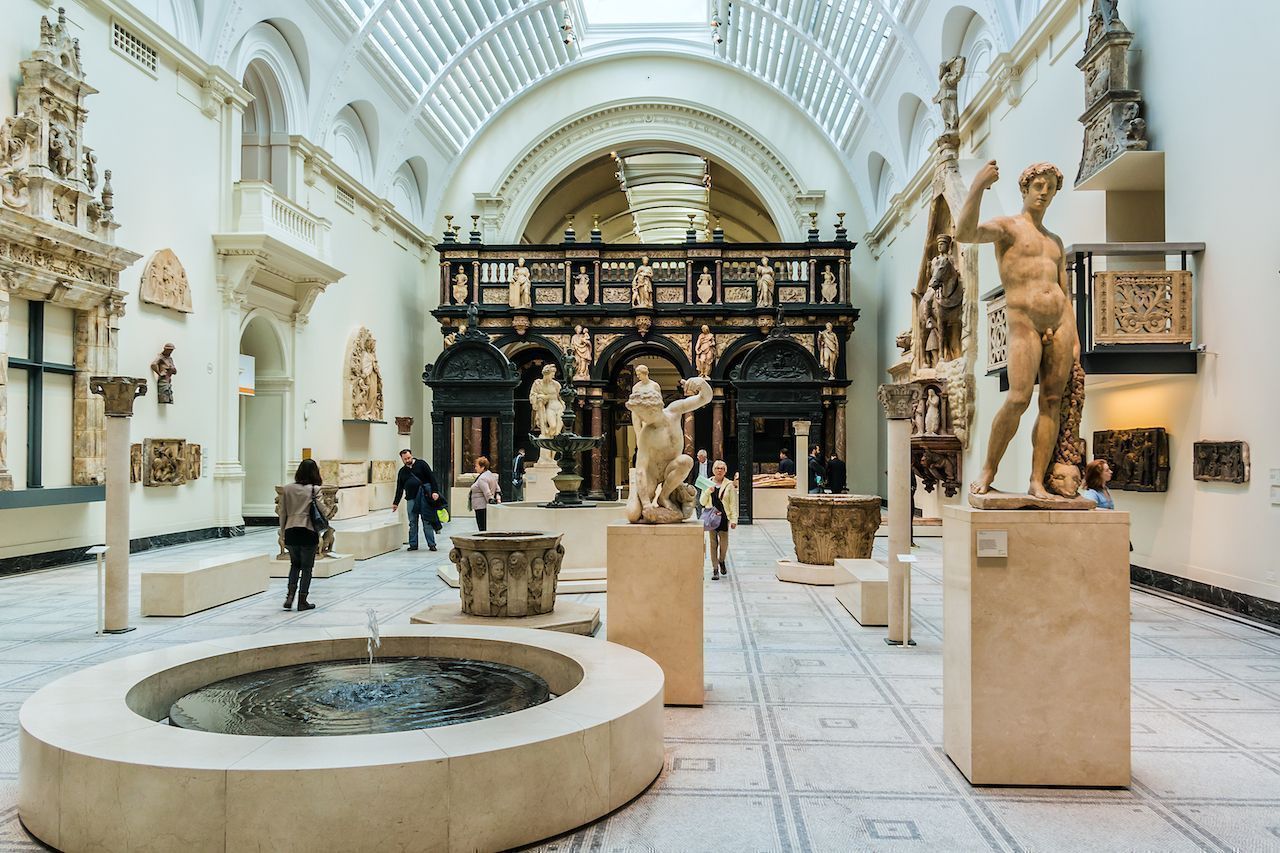
Photo: Kiev.Victor/Shutterstock
The V&A — Also known as The Victoria and Albert Museum, the V&A houses the world’s largest collection of sculptures and decorative arts. Free to enter, it is easy to spend an entire day navigating the museum’s impressive collection of 2.3 million objects. Within this grand Victorian building, visitors can expect to find furniture, paintings, jewelry, clothing, ceramics, books, and glasswork spanning 5,000 years of human history. Take one of many free daily tours, whether an introductory or bespoke one, to get an expert view of the museum. Though the museum is free, some of the temporary exhibitions require a fee. There are also three cafes and a huge shop full of unique gifts.

Photo: Fabiano’s_Photo/Shutterstock
Natural History Museum — Situated in London’s South Kensington area, right across from the V&A, this popular museum explores the diversity of our planet from dinosaurs to volcanoes and marine life. With a whole host of interactive exhibitions, it is a great option for families. The museum is well known for its famous dinosaur collection and large selection of rare fossils. Must-sees include the mammal gallery in the blue zone for impressive replicas of mammoths, giraffes, and cetaceans, and the gorgeous Hintze Hall for a good look at the blue whale skeleton that hangs from its ceiling. When it’s time to rest, take a break at one of three cafes or enjoy burgers, steaks, and pizza at the T.Rex Restaurant. The Natural History Museum is free to enter.
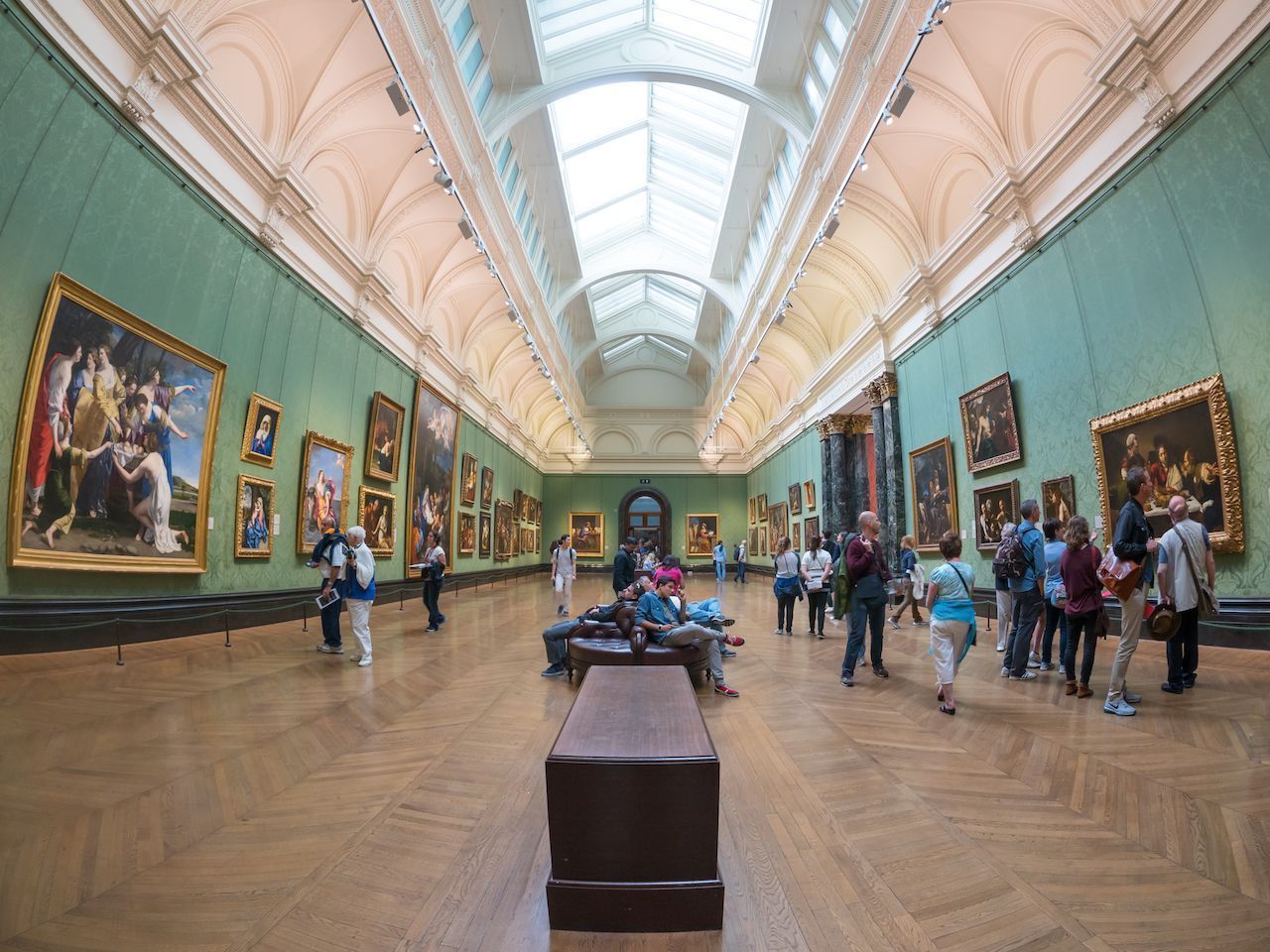
Photo: PriceM/Shutterstock
National Gallery — Overlooking Trafalgar Square, the National Gallery is home to a collection of over 2,300 paintings, some of which date all the way back to the 13th century. Offering free entry to all visitors, this world-famous gallery includes work by Van Gogh, Monet, Cezanne, Michelangelo, and Turner. Across two levels, visitors will also find three gift shops with a variety of books, prints, homeware, and unique souvenirs. The National Dining Rooms serve up a selection of salads, snacks, cakes, sandwiches, and pizza, accompanied by views across Trafalgar Square. Enjoy a classic brunch or a pre-theater dinner at The National Cafe or grab a cup of coffee at the Espresso Bar. The gallery also has a variety of ticketed exhibitions and events, that change on a regular basis.
Theater and live performances
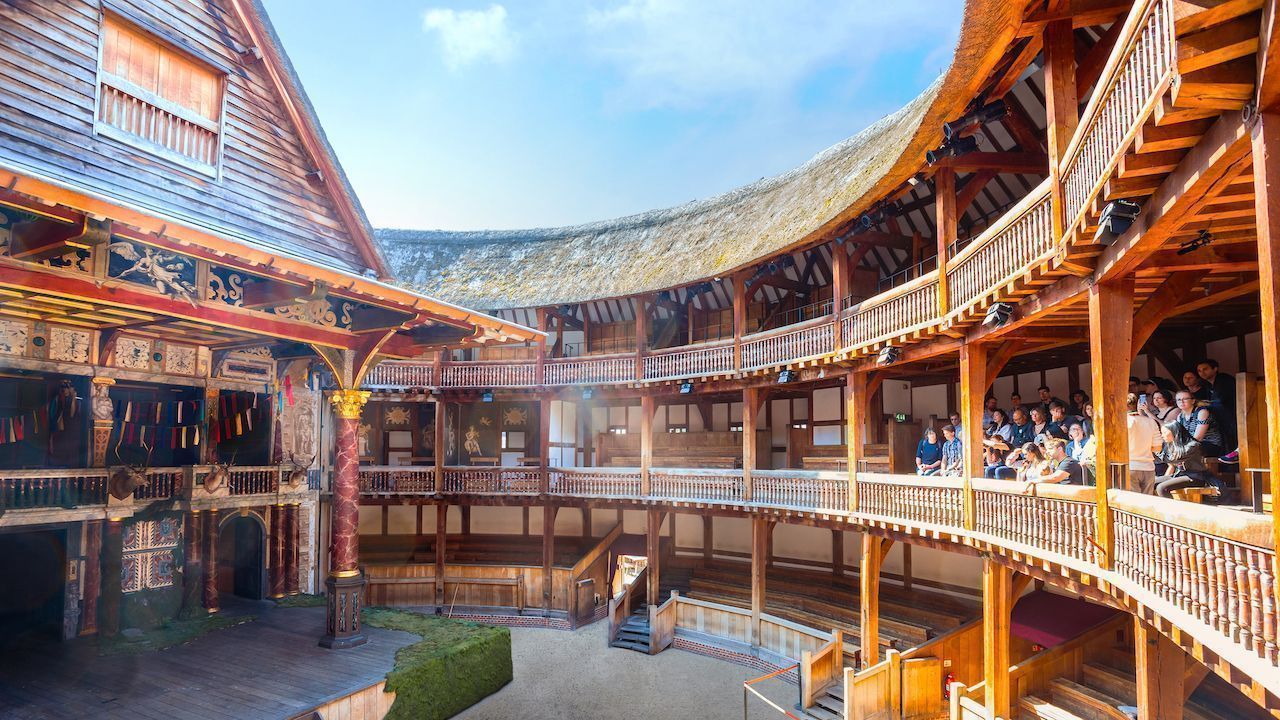
Photo: cowardlion/Shutterstock
Shakespeare’s Globe — If you hope to see a Shakespearean play performed well, the Globe is the place to hit. Shakespeare’s Globe is a beautiful structure inspired by the original Elizabethan playhouse where the Bard first staged his plays. Open since 1997 on London’s South Bank, the theater offers both classical and contemporary productions across two spaces. The main auditorium was created to resemble the original Globe Theatre with an open-top roof, standing tickets, and traditional bench seating. Performances happen no matter the weather, and if you’re prepared to get wet, standing tickets in the Yard cost about $6.50. Those keen to learn a little more can also take an informative backstage tour and explore the theater’s exhibition.
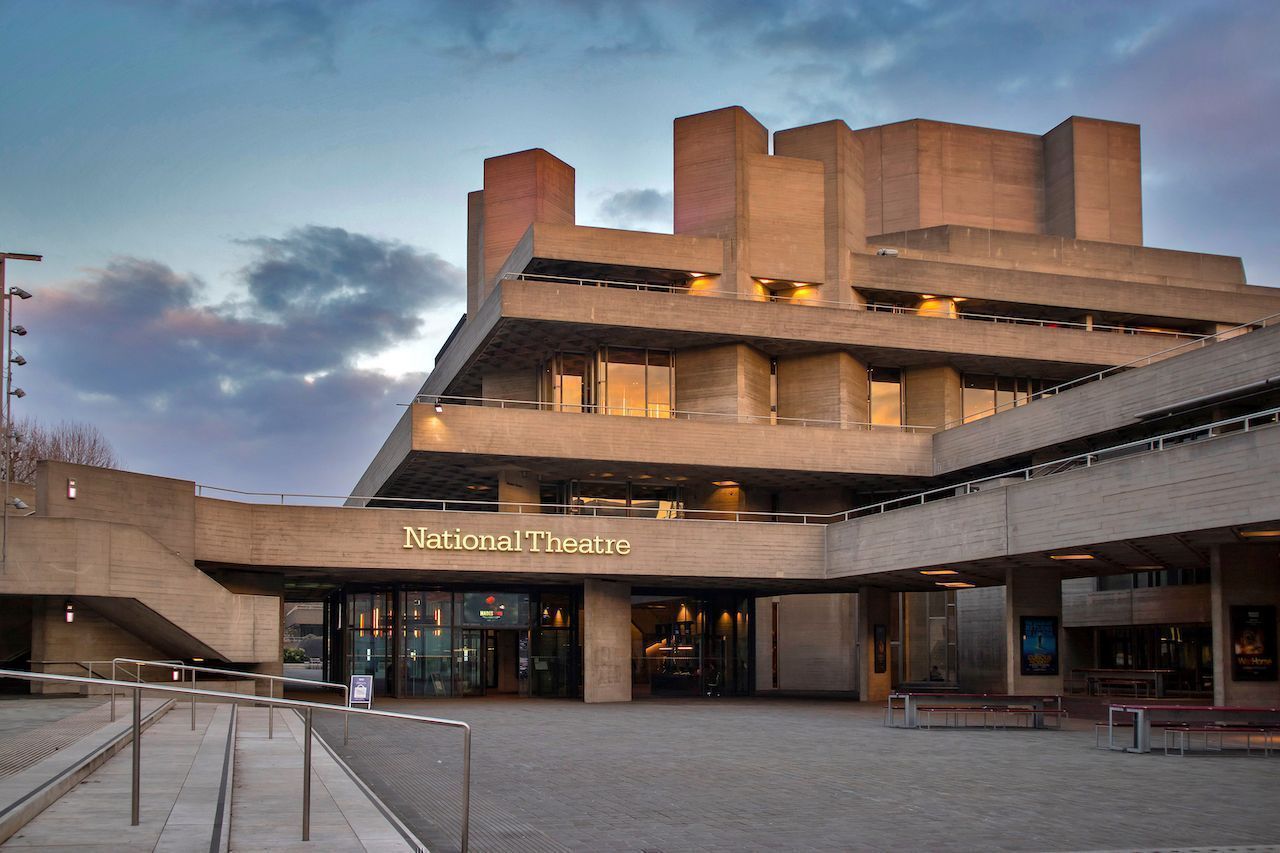
Photo: Elena Rostunova/Shutterstock
National Theatre — No other institution celebrates Britain’s diverse theater scene quite like the National Theatre. Another landmark along the South Bank, this theater has three auditoriums that can host a whopping nine different productions in just one week. It has created world-renowned productions including War Horse, One Man Two Guvnors, and The Curious Incident of the Dog in the Night Time. This public building is home to two restaurants, two cafes, four theater bars, a coffee shop, a riverside bar, and several scenic terraces. It also holds a free outdoor festival in summer, ideal for those looking to experience London’s theater scene on a budget.
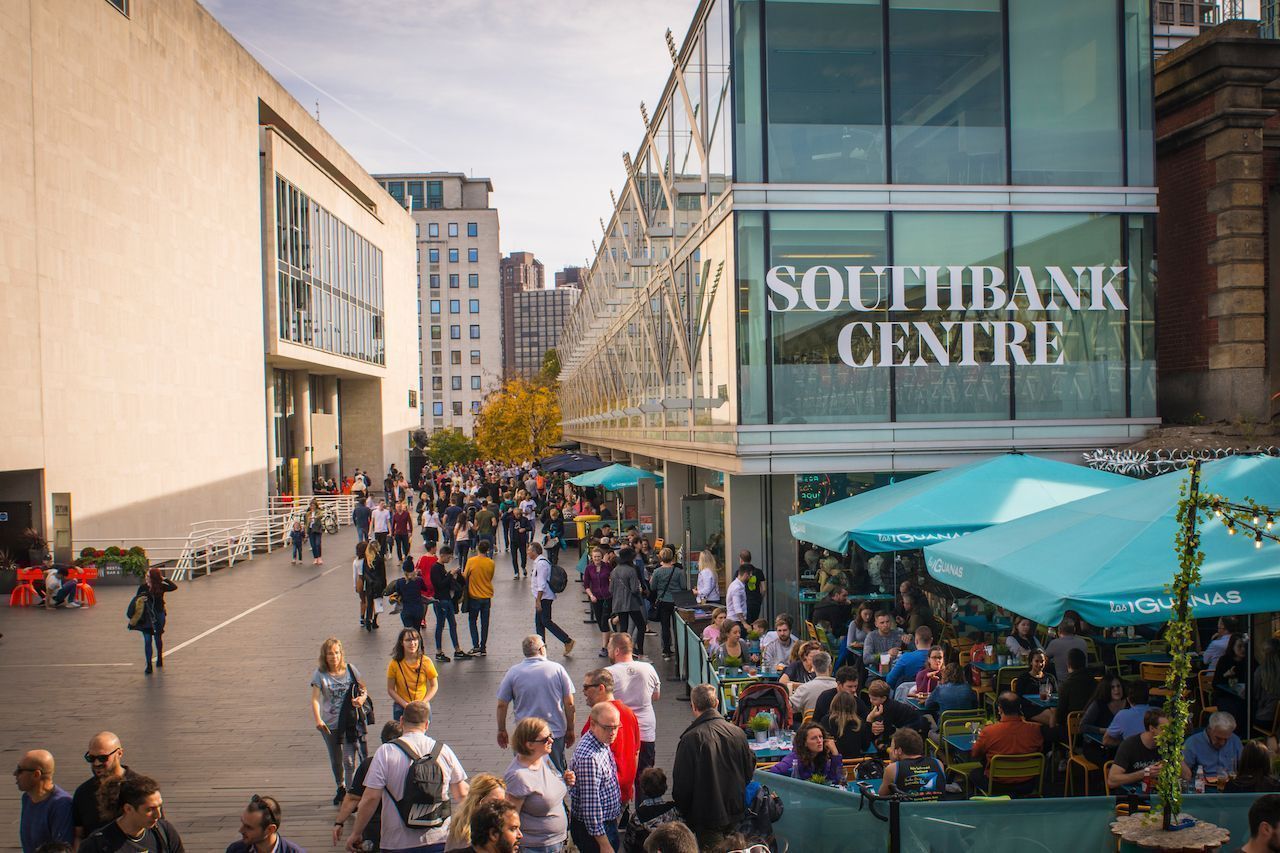
Photo: Willy Barton/Shutterstock
Southbank Centre — The Southbank Centre is an art center that’s home to the Royal Festival Hall, Queen Elizabeth Hall, Purcell Room, and Hayward Art Gallery. The Royal Festival Hall is the main focal point, having hosted renowned orchestras and classical musicians since 1951. Queen Elizabeth Hall and the Purcell Room hold daily concerts, discussions, spoken word, comedy, and dance performances while the Hayward Art Gallery always has an exhibition on. With lots of public spaces to sit and relax and panoramic views across the city, the Southbank Centre is a popular venue for locals and tourists alike. Perhaps the best part about this diverse building is its range of free festivals held throughout the year, including a European Christmas Market, the Women of the World festival, and the Southbank Centre Food Market, open every Friday, Saturday, and Sunday.

Photo: Claudio Divizia/Shutterstock
The Barbican Centre — Standing at the forefront of European performance art, the Barbican Centre is an exciting arts venue with contemporary theater performances, exhibitions, and live music. Pushing the boundaries at every opportunity, the Barbican plays host to world-class directors, choreographers, collaborators, and artists. Tickets for performances vary in price and tend to book up in advance, so plan ahead of time. There are also film screenings with blockbusters, arthouse, animations, and foreign movies to choose from. Don’t worry if you’re traveling on a tight budget — there is always a free exhibition in the center’s public areas. If you do happen to have some spare cash, though, the Barbican has a range of discussions, performances, and workshops on offer.
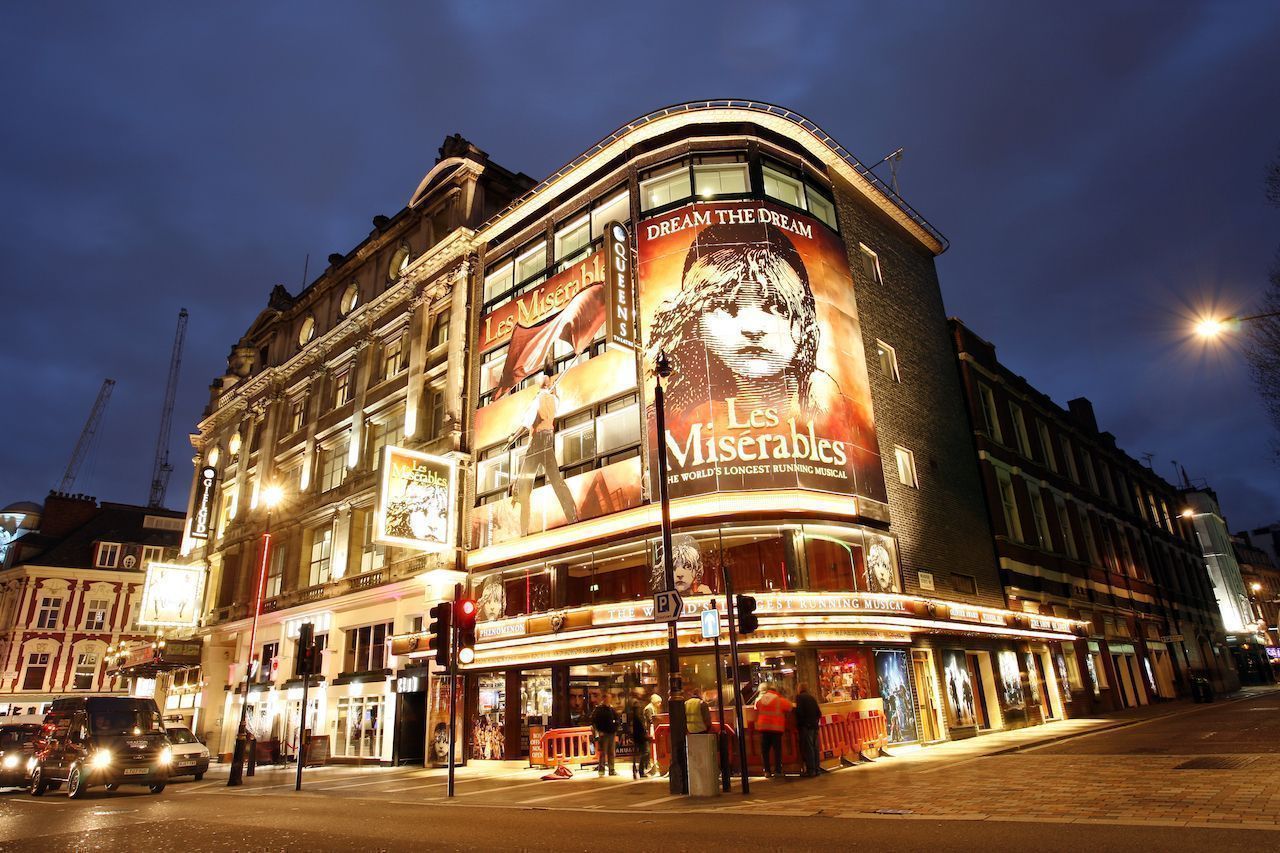
Photo: Bikeworldtravel/Shutterstock
West End/Piccadilly Circus — The West End is London’s go-to hub for all-singing, all-dancing theatrical productions. This fun-filled district spans across SoHo, Leicester Square, Covent Garden, Oxford Street, Regent Street, and Piccadilly Circus. The West End produces some of the best theater in the world. Defined by its bright lights and large road crossing, Piccadilly Circus stands at the center of the West End. From here, take a walk along Shaftesbury Avenue and Haymarket for a wide selection of musicals and plays. Some of the city’s most popular and longstanding shows include Phantom of the Opera, Les Miserables, and The Lion King. More recent additions to the West End theater scene include Matilda The Musical, Harry Potter and the Cursed Child, and The School of Rock. Check out our selection of the best shows to see in London this year.
Royal sites

Photo: David Steele/Shutterstock
Buckingham Palace — When you think of London, Buckingham Palace is probably the first landmark that comes to mind. This iconic building is the official residence of Queen Elizabeth II with beautiful gardens and stunning staterooms that are still in use today. The palace is open to visitors for 10 weeks in summer from the last week of July to the end of September. Taking place at Buckingham Palace most mornings, the Changing of the Guard is a spectacular event that involves the shift change of the Queen’s Guard accompanied by a big marching band. This iconic cultural ceremony is free to watch, just be sure to arrive 45 minutes early and check on the website for exact dates and timings.
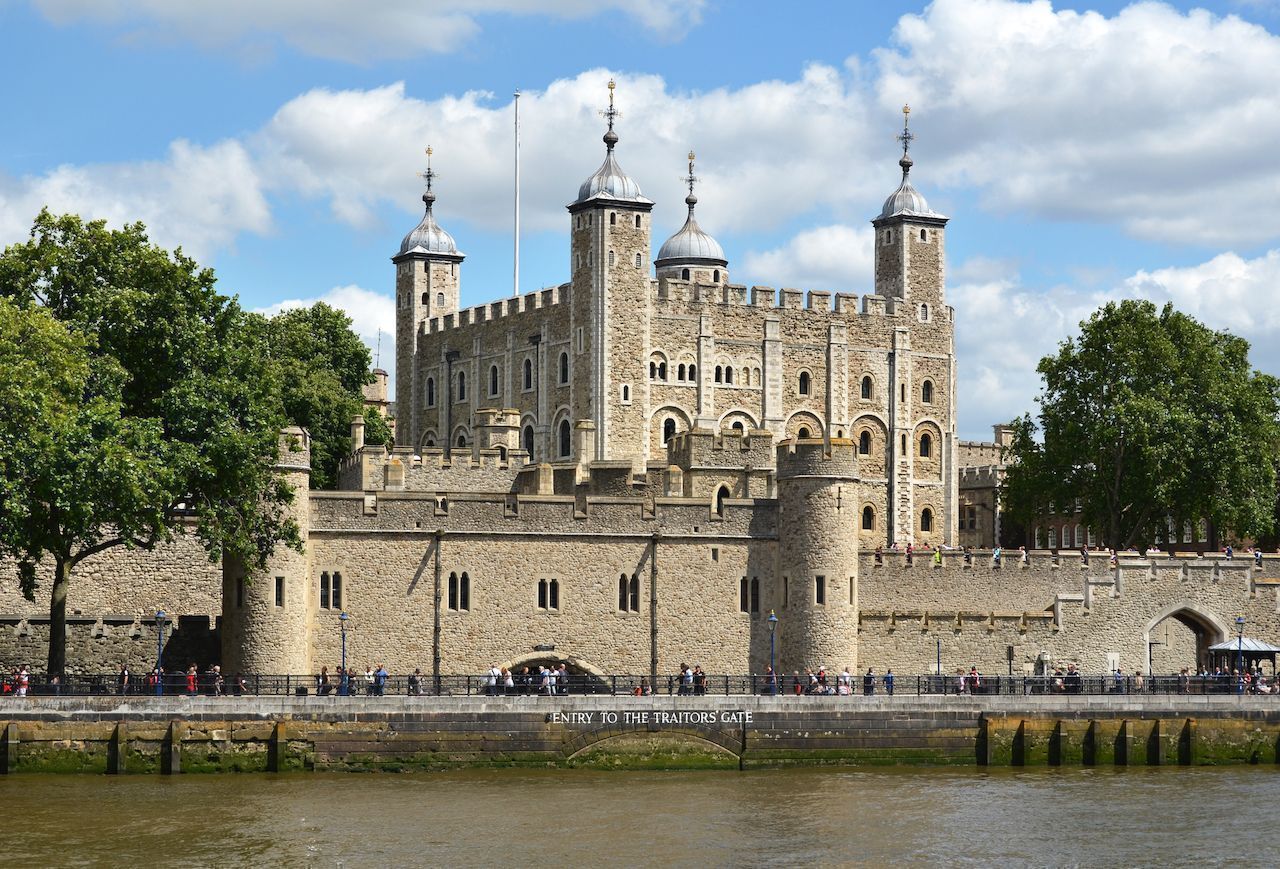
Photo: Alexander Chaikin/Shutterstock
Tower of London — If your dark side craves to walk in the footsteps of Henry VIII and Anne Boleyn, head to the Tower of London. Steeped in over 1,000 years of history, this fortified castle is a great place for those hoping to learn more about the city’s royal history. Located along the River Thames, connected via Tower Bridge, the Tower of London is a UNESCO World Heritage site brimming with interesting tales. To hear all about the tower’s gruesome past, be sure to join a free guided tour with the knowledgeable Yeoman Wardens. Tours run every 30 minutes from the main entrance and are available to all ticket holders. While the castle offers many things to see and do, the star attraction has to be the Crown Jewels. Protected by the Queen’s guard, this world-renowned collection includes royal diamonds, gemstones, precious jewelry, and significant religious artifacts that have been part of the British Monarchy for centuries. You may even recognize some of the items as they are still worn by the Royal family during special occasions and national ceremonies.

Photo: Mistervlad/Shutterstock
Kensington Palace — As the birthplace of Queen Victoria and the current home of the Duke and Duchess of Cambridge, Kensington Palace is another royal landmark to add to your itinerary. Surrounded by Kensington Gardens, this beautiful palace is a lovely way to spend an afternoon. For over 300 years, it has been home to young royals including Mary II, Queen Anne, and Diana, Princess of Wales. Explore the beautifully reimagined childhood rooms of Queen Victoria or admire the opulence and grandeur of The King’s State Apartments. Many visitors also head here to see the Diana: Designing for a Princess exhibition, which includes original sketches and outfits worn by the princess. After exploring the grand rooms, artwork, and palace gardens, treat yourself to an afternoon tea at the tranquil tea room.
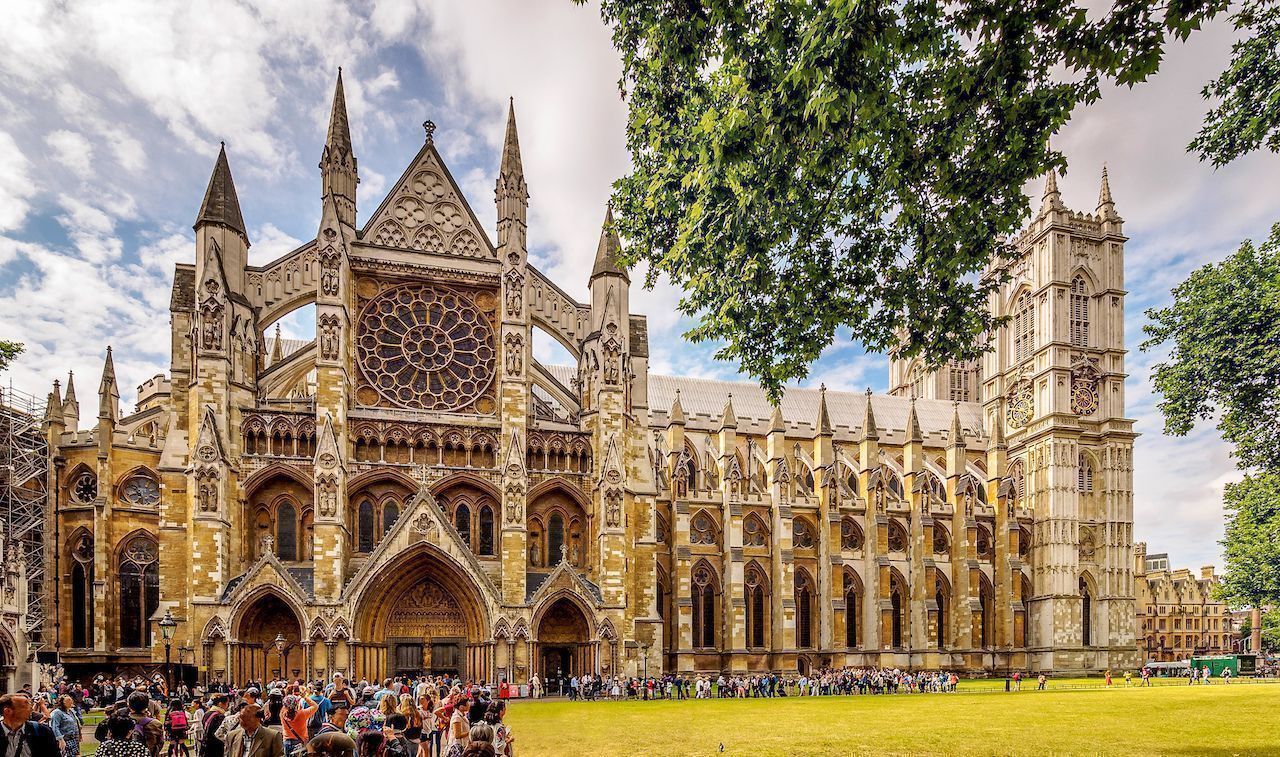
Photo: photo.eccles/Shutterstock
Westminster Abbey — Another UNESCO World Heritage site, this spectacular gothic church dates back to 1066. Located just a three-minute walk from Westminster tube station, this magnificent church has hosted every royal coronation since its creation and witnessed 16 royal weddings, including that of Prince William and Kate Middleton. Everyone is welcome to join a daily service, free of charge. These services usually run five times a day and are a great way to see the church in action. If you’d prefer to explore the abbey on your own time, visitors are welcome between 09:30 AM and 3:30 PM for a fee.
Other points of interest

Photo: EQRoy/Shutterstock
Shoreditch Street Art — Shoreditch is a quirky borough brimming with vintage shops, street-food pop-ups, and trendy bars. But this area is also worth visiting for its extraordinary range of street art. Begin your self-guided walking tour with a visit to Rivington Street, home to a world-famous wall mural by the mysterious Banksy. Continue on along Rivington Street for a variety of daring pieces by local artists before moving to Brick Lane, Fashion Street, and Shoreditch High Street. Other examples of Shoreditch’s street art scene include two brightly designed tube carriages situated on top of a building along Great Eastern Street.
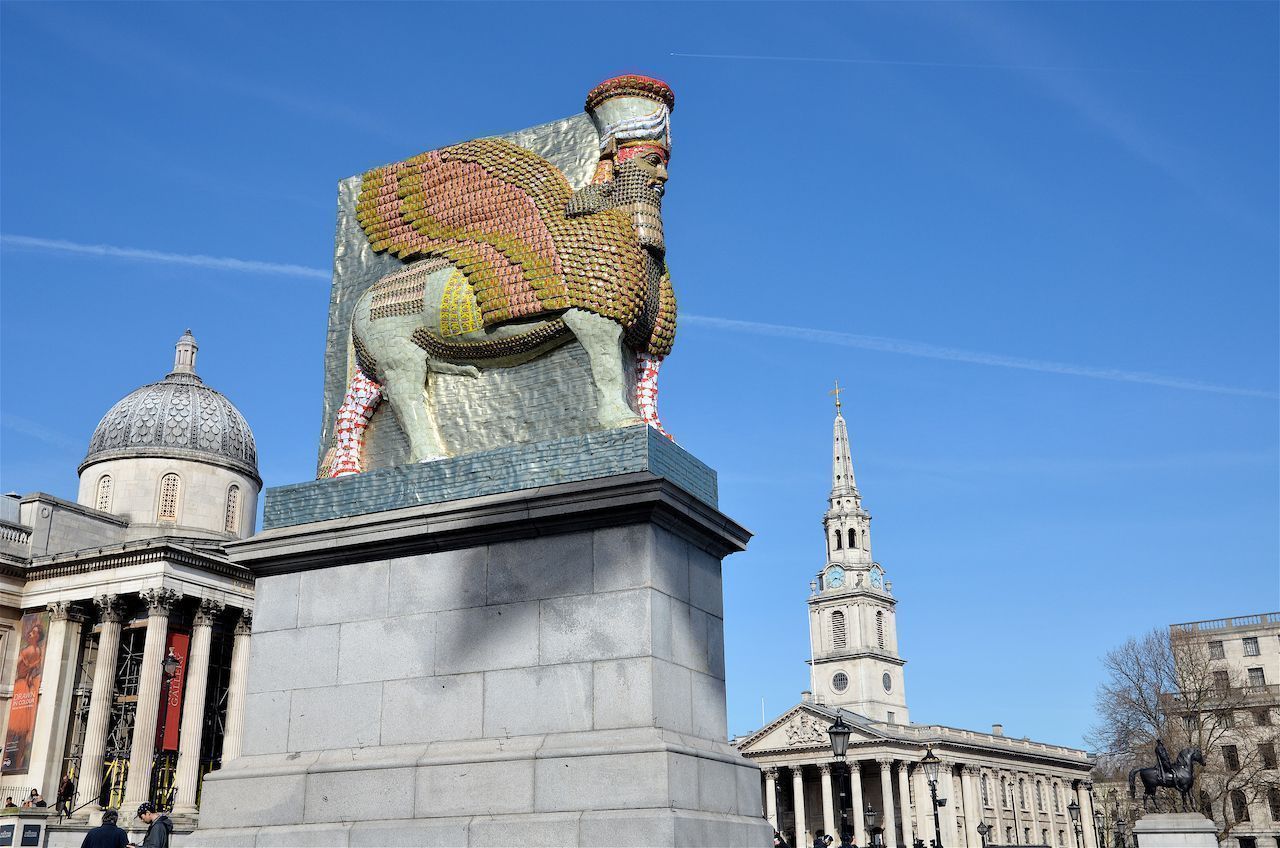
Photo: Ron Ellis/Shutterstock
Trafalgar Square Fourth Plinth — Trafalgar Square, with its fountains and the iconic Nelson Column surrounded by four lions, is London’s most popular public square. Located just in front of the National Gallery, Trafalgar Square is used for free cultural festivals, live street performances, political demonstrations, and public concerts. The Fourth Plinth stands tall in the northwest corner of the square and exhibits national and international artwork that is selected by a commissioning group every two years. Since March 2018, the piece displayed is The Invisible Enemy Should Not Exist by artist Michael Rakowitz, a replica of an artifact destroyed by the Islamic State in Mosul in 2005. The Fourth Plinth is free to view and a great way to experience London’s art scene if you don’t have enough time to visit a gallery.
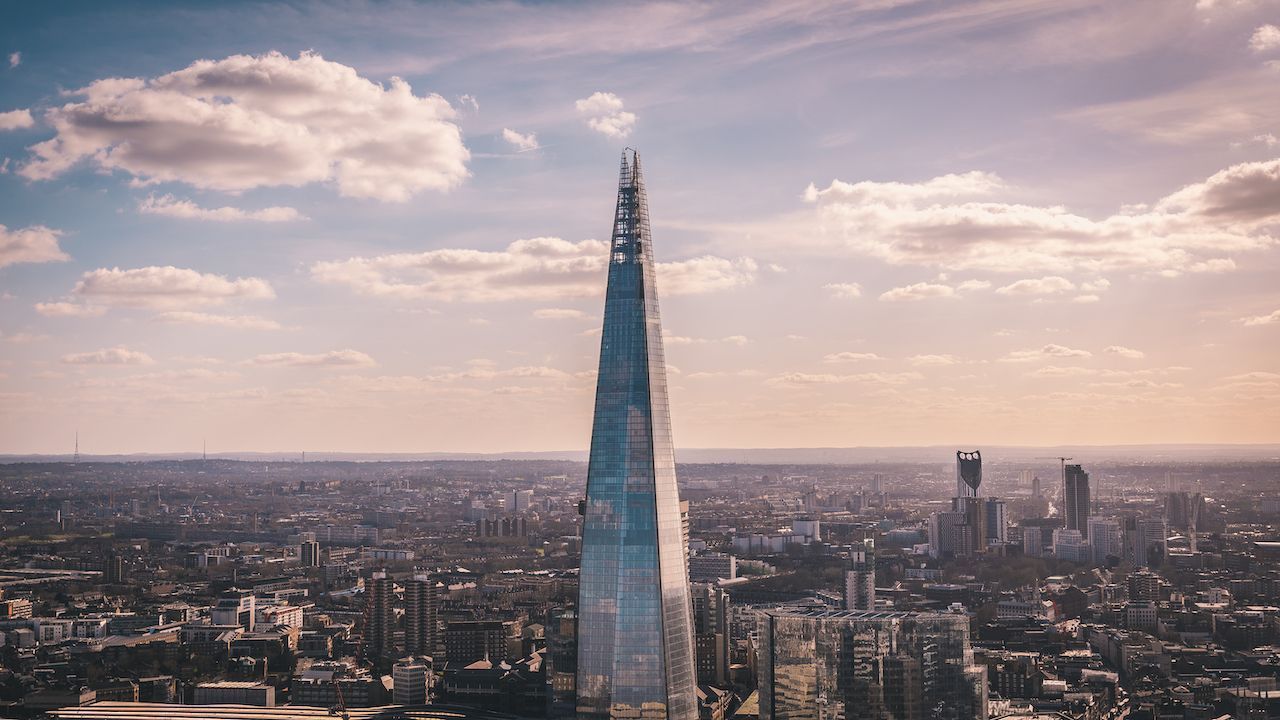
Photo: Dmitry Tkachenko Photo/Shutterstock
The View from The Shard — There are many unusual structures among London’s impressive skyline, but The Shard is the one that stands out the most. This unique needle-shaped construction stands at 1,017 feet tall, making it the highest building in the United Kingdom. Interestingly, it is made of 11,000 glass panels that take the window cleaners three months to clean. This famous skyscraper consists of offices, high-end restaurants, and the luxury Shangri-La hotel. The View from The Shard does exactly what it says after a quick 72-floor elevator ride. On a clear day, visitors can see as far as 40 miles. The open-air Skydeck provides unrivaled views, while the “slide” ride is a one-of-a-kind virtual reality experience that has you swooping above the city. Viewings take place every day between 9:00 AM and 10:00 PM.

Photo: ZGPhotography/Shutterstock
St. Paul’s Cathedral — A more traditional yet just as impressive feature of London’s skyline is St Paul’s Cathedral. While the cathedral itself dates back 1,400 years, the current structure was reconstructed after the destruction of the Great Fire of London. Inside, climb 257 stairs to enter the cathedral’s famous domed ceiling. Within the domed roof, you will find the Whispering Galleries that were designed to hear a whisper from the opposite side. Climb a little further to the Stone Gallery (376 steps) and The Golden Gallery (528 steps) for wonderful rooftop views across the city. When you’re back at ground level, head downstairs to the crypts, which contain the tombs of Wellington, Nelson, and Sir Christopher Wren. St Paul’s is open to visitors from Monday to Saturday and is closed for service on Sundays. Attend one of the choral evensongs at 5:00 PM from Monday to Saturday for an experience like no other.

Photo: r.classen/Shutterstock
Tower Bridge — While many visitors enjoy walking across the bridge in Bridget Jones fashion and gazing out along the River Thames, this famous attraction also invites you to step inside. For a unique experience, explore the walkways and engine rooms of this popular suspension bridge. Go up above the traffic and walk the glass floor to look at London buzzing below. The bridge also hosts a monthly sunrise yoga class on the glass platform that links the top of the bridge’s two towers. To find out more about the construction and history of the bridge, join an informative Behind the Scenes Tour.
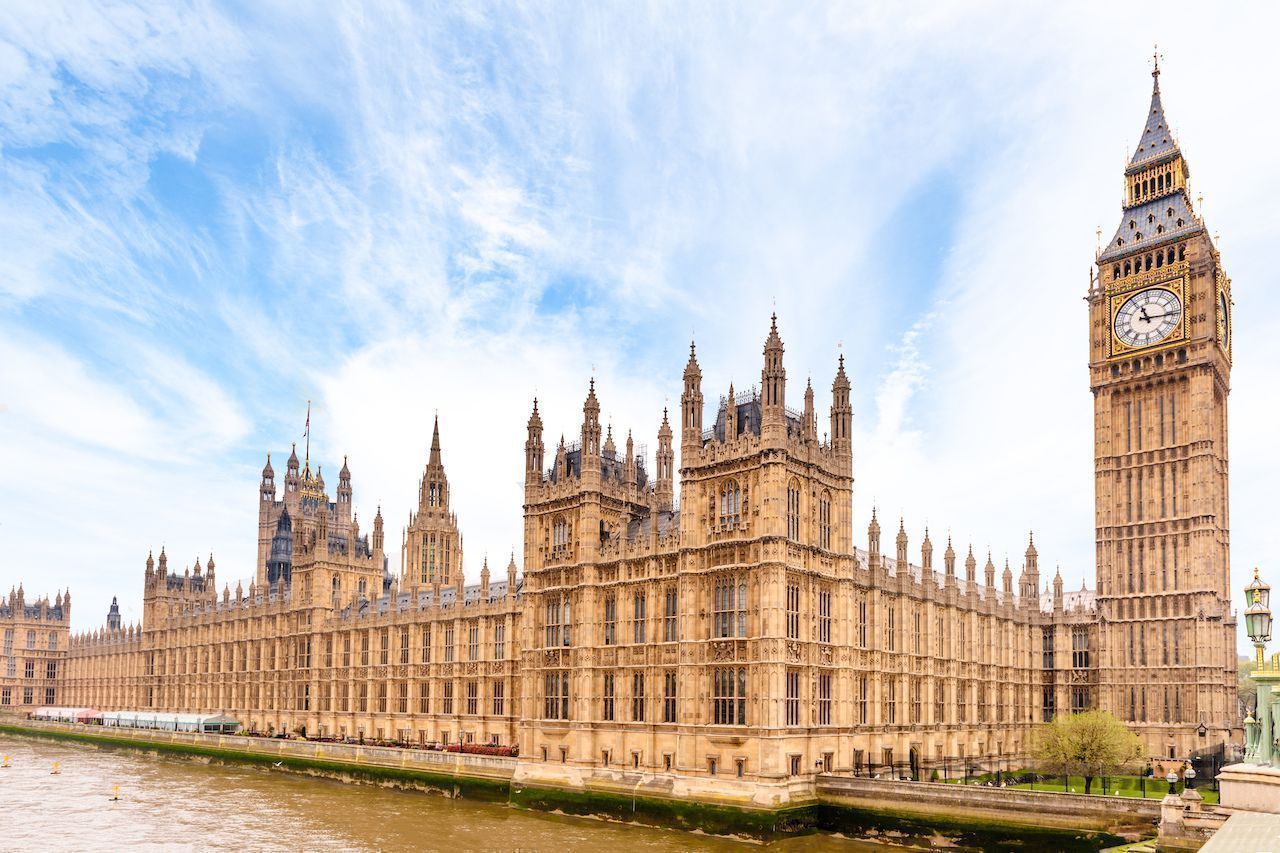
Photo: Richie Chan/Shutterstock
Palace of Westminster/Big Ben — After visiting the royal palaces, get up to date with the more modern British governing system. Located just a short stroll from Westminster Abbey, the Palace of Westminster is a beautiful 19th-century building that’s home to the two Houses of Parliament: the House of Commons and the House of Lords. Take an audio or guided tour of the Royal Gallery, Lords Chamber, Members Lobby, and Commons Chamber to understand. Tours are available every Saturday and on weekdays when parliament is not in session. Walk in the footsteps of the country’s most famous leaders and discover the important proceedings that take place here. Attached to the building is the iconic Big Ben clock, currently under renovation. For the best views of the Houses of Parliament and Big Ben, stand on Westminster Bridge.

Photo: Kiev.Victor/Shutterstock
London Eye — Since opening in 1999, this giant Ferris wheel has become one of the city’s most popular landmarks. The London Eye is a great option for those who are short on time. Hop onboard the glass pods and enjoy views of St Paul’s Cathedral, Tower Bridge, The Shard, and the skyscrapers of Canary Wharf. In the evening, visitors can enjoy the bright city lights for a more romantic experience. The ride lasts just 30 minutes, and you must be prepared for long queues during weekends and school summer holidays (end of July through early September). To beat those lines, it’s advisable to book a timed slot online.